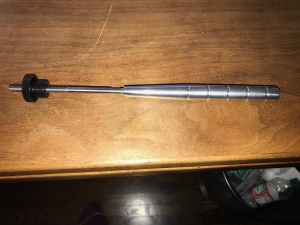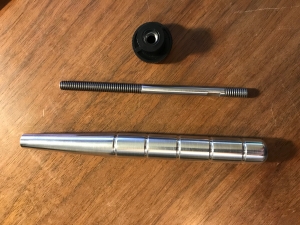EdM
Member
I recently set up my 3 wheel buffing system from Peachtree Woodworking, and promptly found several of my blanks flying through the shop, never to be retrieved again. The rudimentary tool I created out of oak to hold the blanks while buffing just didn't cut it...
so... I emailed Rick Herrell (Rick's Custom Tools), asking if he could make something for me (and us!) that would hold the blank while buffing. He suggested that i simply use a mandrell and knurled nut, but I use a mandrel saver, and had nothing here that could be used to secure the blank.
Here's what he came up with. It's 10" in length, with a 1/4"x20 thread on both ends (Rick, please confirm.)
Can't wait to get in to the shop this weekend and try it out!

View in Gallery

View in Gallery
EdM
so... I emailed Rick Herrell (Rick's Custom Tools), asking if he could make something for me (and us!) that would hold the blank while buffing. He suggested that i simply use a mandrell and knurled nut, but I use a mandrel saver, and had nothing here that could be used to secure the blank.
Here's what he came up with. It's 10" in length, with a 1/4"x20 thread on both ends (Rick, please confirm.)
Can't wait to get in to the shop this weekend and try it out!

View in Gallery

View in Gallery
EdM
